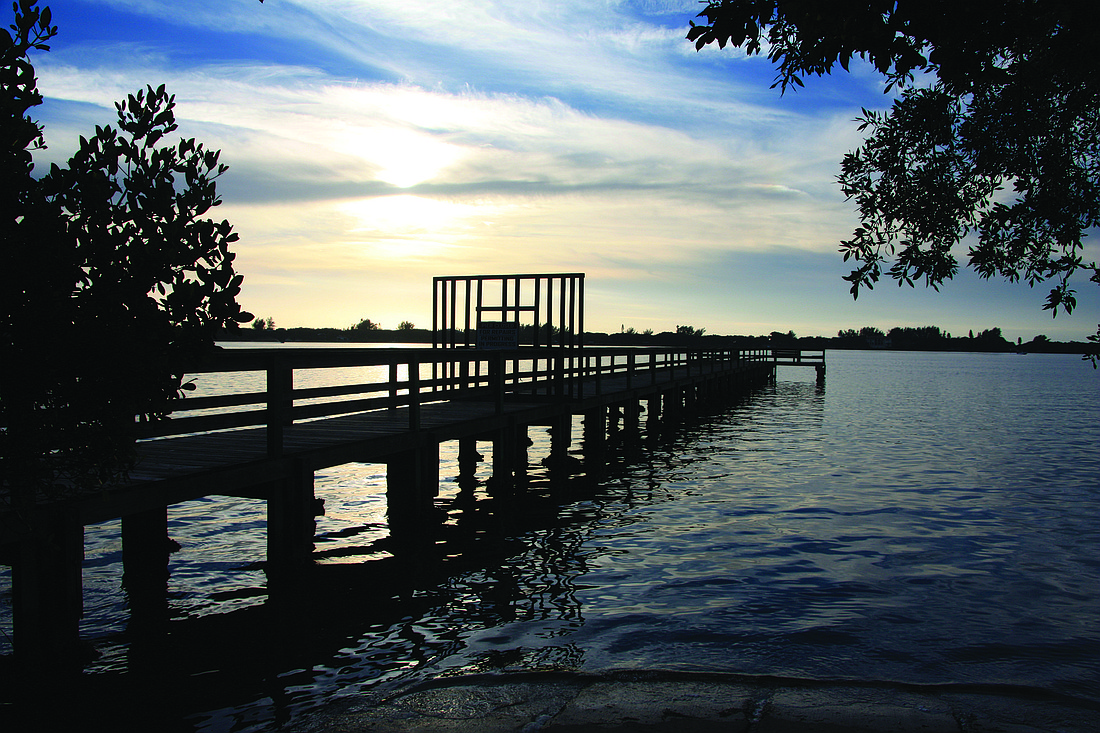- April 19, 2024
-
-
Loading

Loading

At the end of a quiet, tree-lined side street off U.S. 41, just south of Historic Spanish Point, a historic area landmark sits abandoned on the Little Sarasota Bay coastline — watching the tide roll away.
After spending more than a year in limbo awaiting federal permits, a county project to rebuild the Osprey fishing pier is finally moving forward and could be complete as early as fall or winter, county officials said.
Plans to reconstruct the Osprey-area landmark (whose origins date back about 100 years) took a major step forward Jan. 18, when Sarasota County Parks and Recreation Director Carolyn Brown announced to Interim County Administrator Thomas Harmer via email that her staff had secured all federal, state and local permits required to rebuild the Osprey fishing pier.
Brown reported that, with permits now in hand, the project engineer had begun working on designs, which were projected to take one month to complete. After design completion, the project will either be assigned to a marine contracting unit or competitively bid — depending on cost estimates, Brown said.
The Osprey fishing pier is located at the end of Main Street in Osprey. According to Steven Sauer, an environmental consultant Sarasota County contracted to handle the pier rebuild’s regulatory process, there has been a pier at the current site since the 1950s, although there is evidence of another pier nearby dating back as early as 1910.
Sauer said the county was currently conducting a fact-finding investigation to clarify the exact history of the site.
Portions of the current Osprey fishing pier, which was built in 1973, were closed in June 2012 when county engineers found that the majority of concrete pillars supporting the structure had deteriorated beyond salvage and would have to be replaced.
The Sarasota County Commission applied for a grant from the West Coast Inland Navigation District to cover the estimated $200,000 to $300,000 cost of the project, following pressure from Osprey residents living on Main Street who frequently used the pier and wanted it rebuilt.
The WCIND awarded the grant to Sarasota County in October 2012, and the Sarasota County Commission swiftly approved the rebuild as a capital improvement project.
Due to the existing pier’s location along the Little Sarasota Bay coastline, it is subject to a stack of permitting requirements related to public safety and environmental protection rules.
Following the 2012 WCIND grant award, county staff began applying for a bevy of permits from the Florida Department of Environmental Protection, Army Corps of Engineers, U.S. Fish and Wildlife Service and the National Marine Fisheries Service. County secured the FDEP permit in April 2013, but was required to submit additional information to the Army Corps several times to ensure the project was not a threat to a nearby seagrass bed and complies with the Endangered Species Act.

Sauer said the number of permits required for the rebuild was not unusual, but the time it took for the permits to be approved was excessive.
“The dilemma was that the length of time the different agencies pored over this was a little unusual and unnecessary,” Sauer said. “The county basically had to sit idle for more than a year, waiting for the federal regulatory process to play itself out.”
Sauer added that all state permits were approved within 30 days, and that federal permits unnecessarily stalled the project. The prolonged permitting timeline highlights a trend in the federal permitting process, which, according to Sauer, is unnecessarily delaying projects across the country.
“That’s the unfortunate reality that many applicants are experiencing with projects that have to go through similar reviews,” Sauer said, referring to the federal permitting process. “It’s been a real frustration for a lot of people, and Sarasota County is one of many not-too-well-served customers in this process.”
According to an August 2012 email to the Sarasota County Commission from Parks and Recreation Project Manager Rob LaDue, the new pier was pitched to the WCIND as a concrete structure with composite decking and railing —making it more durable and resistant to decay than the previous structure.
Despite the changes, the rebuilt pier will look “virtually identical” to the existing one, Sauer says.
Contact Nolan Peterson at [email protected]